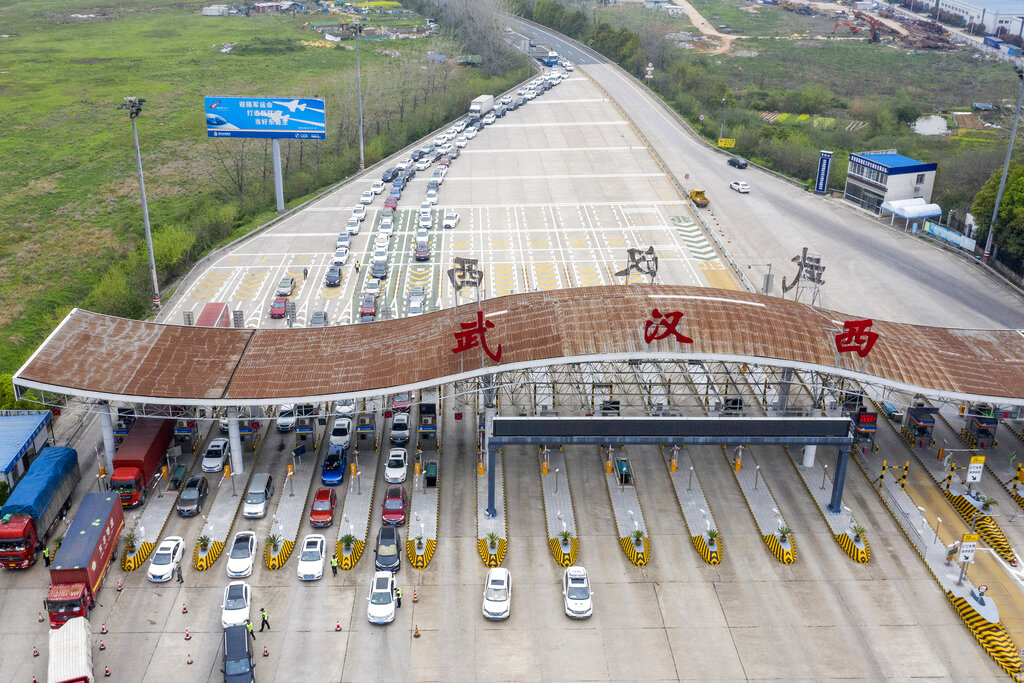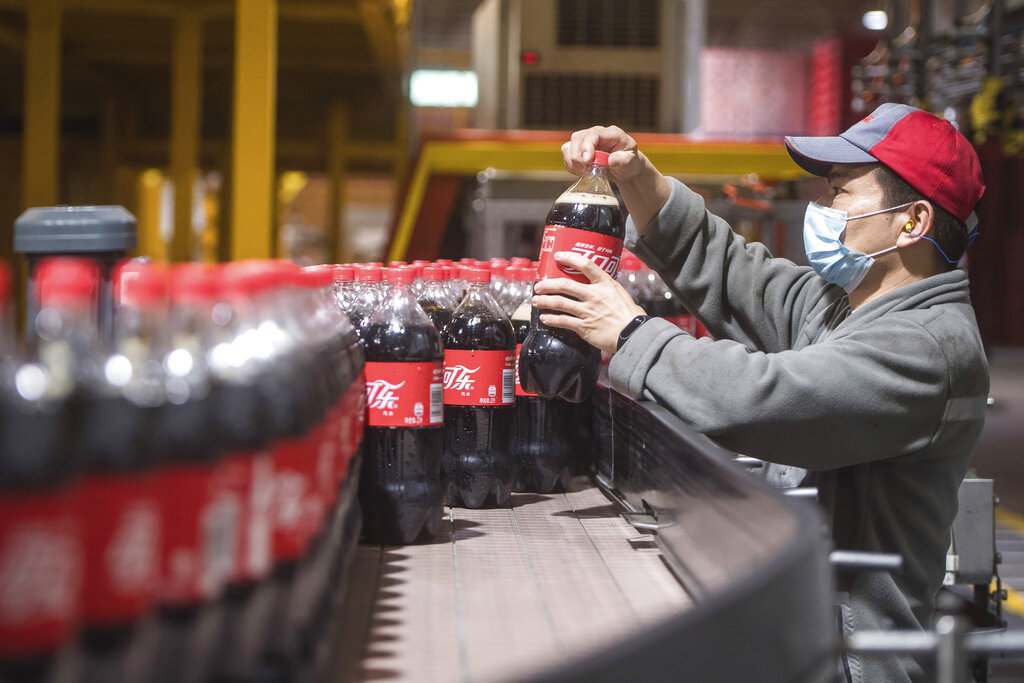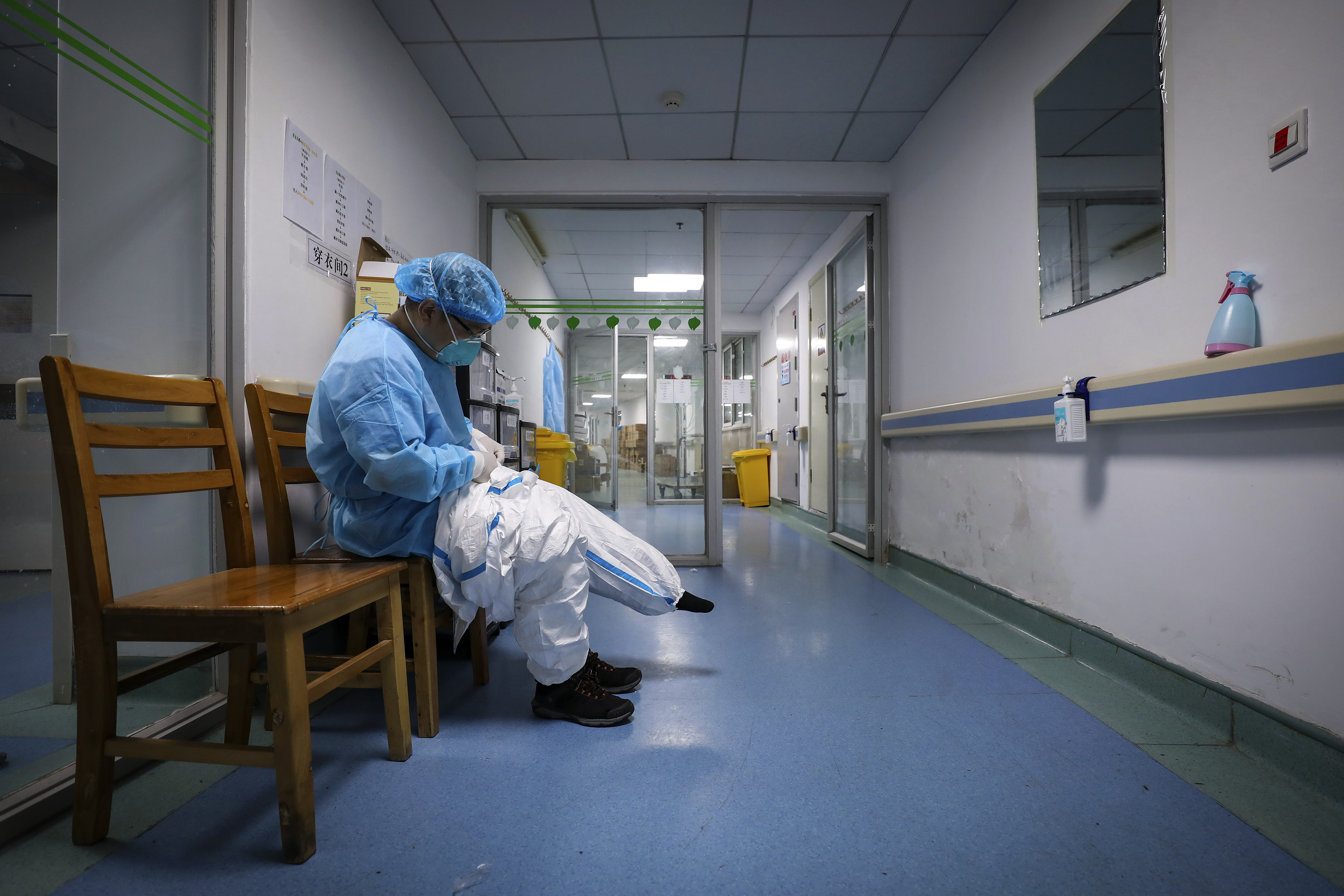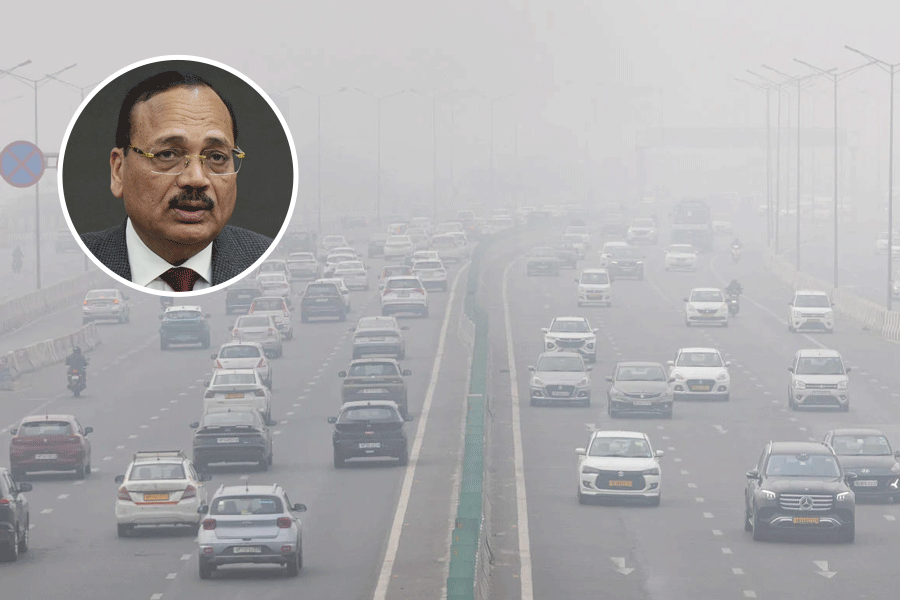China on Wednesday downgraded the risk level of the coronavirus in its epicentre Wuhan from high to medium and resumed bus services within the city for the first time since the nine-week lockdown even as a new study said thousands of positive cases there may have gone under the radar.
Trains carrying factory employees back to work after two months in locked-down cities rolled out of Hubei province, the center of China’s virus outbreak peopled by 56 million, as the government on Wednesday began lifting the last of the controls that confined tens of millions of people to their homes.
Roadblocks on bridges and at expressway gates opened, allowing trucks and cars through for the first time in two months.

An aerial photo shows vehicles waiting to cross into Wuhan at a highway toll station in Wuhan, in central China's Hubei Province AP
Residents of Wuhan, the provincial capital city of 11 million where the coronavirus emerged in December, are allowed out of the city but cannot leave Hubei until April 8 .
Wuhan will also resume commercial flights from April 8, excluding international flights and flights to and from Beijing.
The government has downgraded the risk level of Wuhan for Covid-19 outbreak from high to medium, state-run China Daily reported on Wednesday.
While Hubei and Wuhan has not reported any new Covid-19 case, four people died in the city taking the death toll in China to 3,281, the National Health Commission (NHC) said on Wednesday.
China on Wednesday said that no new domestically transmitted case was reported on the Chinese mainland on Tuesday, but that 47 new imported cases of nationals returning from abroad were reported, taking the total number of such cases to 474.
Also on Tuesday, four deaths and 33 new suspected cases were reported on the mainland with three of the deaths reported in Hubei.
As the United States and European countries tighten their own controls, China’s ruling Communist Party is relaxing restrictions to revive the economy after declaring victory over the outbreak.
Still, authorities have orders to prevent a spike in infections as millions of people return to work in Hubei or migrate to other provinces. Travelers were checked for the virus's telltale fever and are required to use smartphone apps that keep track of their health reports and whether they have been to risky areas.
A train left the previously locked-down city of Huanggang on Tuesday night carrying 1,133 factory workers back to jobs in Guangdong province, the center of China’s export-driven manufacturing industries in the southeast, according to People’s Daily, the main Communist Party newspaper.
Physicians were aboard to monitor the passengers and the train was due to travel non-stop to Guangzhou, the Guangdong provincial capital, as a precaution. People’s Daily said the workers would be met by buses to carry them directly to factories in Shenzhen and other cities.
“Resumption of labor and production is urgent!” the newspaper said.

An aerial photo shows vehicles waiting to cross into Wuhan at a highway toll station in Wuhan, in central China's Hubei Province AP
A 'little' sigh of relief
In Hubei, authorities began allowing factories, food processors and some other businesses that were deemed essential to reopen on March 11 in a sign of official confidence the disease was under control.
The shutdowns in Hubei, central China's manufacturing center, disrupted smartphone, auto and other major industries.
There is no word on when schools, which have been teaching online and through social media, might reopen in Hubei.
'We still feel it is not the right time to resume classes,” said Li Zhen, a teacher at the Yingshan County Experimental School in Huanggang.
On the Laishui River, the 400-meter (quarter-mile) Hunan-Eqing Bridge that links Hubei with neighboring Hunan province reopened before dawn Wednesday, according to the Chutian Metropolis Daily.
Drivers leaving Hubei were checked for fever and had to show a “green health code” on the tracking app, indicating they had avoided high-risk areas.
'You can breathe a little sigh of relief,” the newspaper quoted a police officer, Tian Gang, as saying. It said he has been away from home for 50 days.
The owner of a private school in Xiangyang said he won't reopen until the outbreak is declared “completely under control.” He said his 40-member staff have been teaching online but the school lost 500,000 yuan ($70,000) over the past two months.
“I am not dreaming about getting aid, but I hope the government can help ordinary people,” said the owner, who would give only his surname, Shi.
Shi, a 31-year-old father of two, said his students spent the lockdown indoors reading books and watching TV.
“I told them not to go outside because there was a monster out there,” he said.
Most of the public cooperated with the restrictions, but a man was sentenced to death March 1 for fatally stabbing two people who were guarding a roadblock in Yunnan province in the southwest.
While China began to relax measures taken to control the coronavirus, a Chinese health official said China must not loosen-up epidemic control as the flow of people increasing.
China should stick to strict measures on epidemic prevention and control as the country resumes work and production and the flow of people increases, Mi Feng an official with the NHC told media here.
'We must take strict measures to prevent imported Covid-19 cases from abroad and a rebound of the epidemic domestically,' Mi stressed.

In this photo released by Xinhua News Agency, workers labor at an assembly line for Dongfeng Passenger Vehicle Company in Wuhan, in central China's Hubei Province, March 24, 2020. AP
Auto ready
Wuhan is an automaking center and has factories operated by Groupe Renault, Nissan Motor Co., PSA Peugeot-Citroen and Honda Motor Co. in joint ventures with state-owned Dongfeng Motor Group.
The city also has hundreds of components suppliers.
Renault said its factory in nearby Shiyan reopened March 11 and a Wuhan factory is due to restart March 30.
Honda said its three factories in Wuhan reopened March 11. Nissan said a factory in Xiangyang reopened the following day.
Dongfeng said its own factories in Hubei were approved to resume production as of Monday.
The manager of the Huangshi Jinghua Plastic Mould Co. in the city of Huangshi said its 50 employees went back to work March 18. He said sales are down 30% to 40% from pre-outbreak levels.
Employees were wearing masks and disinfecting the workplace, said the manager, Yin Shuang.
“It is absolutely not the time for us to remove the masks now,” Yin said.

A doctor puts on a protective suit as he prepares to check on the patients at Jinyintan Hospital designated for coronavirus infected patients, in Wuhan AP
60 per cent of carriers in Wuhan asymptomatic
There are still 16,558 medical workers belonging to 139 medical teams who are fighting the virus in Wuhan. China had deployed over 42000 medical personnel including the staff drawn from the military.
As the restrictions in Wuhan relaxed, a new study said roughly 60 per cent of people who contracted the coronavirus in Wuhan were asymptomatic or very mild cases not reported to the authorities.
The estimate was based on about 26,000 laboratory-confirmed cases recorded in the city between December and February, according to a study led by a group of Chinese doctors published in the medRxiv preprint platform early this month.
The paper has not been peer-reviewed, Hong Kong based South China Morning Post reported.
The researchers used lab tests as the basis of their assessment rather than Chinese government data on confirmed cases because the authorities used symptomatic manifestations and abnormal lung scans to classify patients.
The lab test data allowed the doctors from Tongji Medical College in Wuhan, Fudan University and Harvard University, to create models regardless of whether the patients had symptoms, the Post report said.
The study said that based on their models, the total number of infections citywide on February 18 could have exceeded 125,000.
We predicted the cumulative number of ascertained cases to be 26,252 by February 18, close to the actual reported number of 25,961, while the estimated cumulative number of total cases was 125,959, it said.
Wuhan reported 38,020 confirmed cases on February 18.
The study also estimated that 36,798 people had been infected overall as of January 25.










